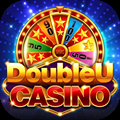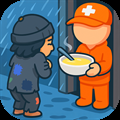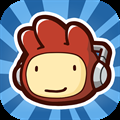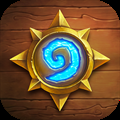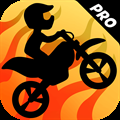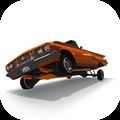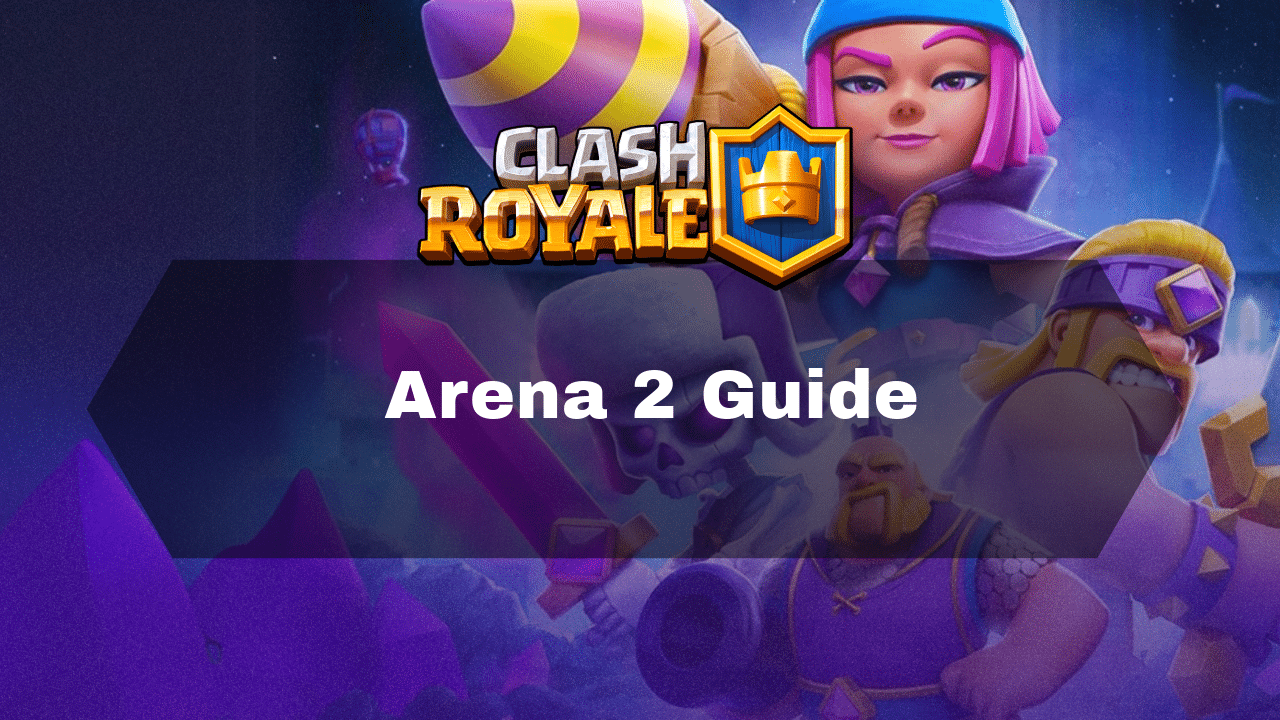
Introduction
Welcome to the Bone Pit, also known as Arena 2, in Clash Royale! This Clash Royale Arena 2 Guide will help you navigate this early stage of the game, where understanding the cards at your disposal and building effective decks is key to progressing through the arenas. Clash Royale is a game that requires you to understand what all the cards do if you want to succeed, but you don’t have to know them all immediately. This guide will provide you with the knowledge needed to gain an advantage in Arena 2 and help you on your journey to becoming a master player.
In Arena 2, you’ll unlock new cards that introduce fresh strategies and variety, even though the Giant remains one of the most powerful cards in the arena. This Clash Royale Arena 2 Guide will walk you through the best deck options for Arena 2, focusing on how to use the new cards effectively and how they synergize with cards from Arena 1. You’ll also learn about card roles and counters, which are crucial for developing a deeper understanding of how to win battles. We’ll discuss common mistakes that beginners make and how to avoid them, helping you improve your decision-making and gameplay.
By the end of this guide, you’ll have a solid foundation for building your own decks and a clear understanding of the key strategies that will help you climb the ranks. Remember, the early arenas of Clash Royale are all about learning the game and mastering the basics. Let’s dive in and get you ready to dominate in the Bone Pit!
New Cards in Arena 2
In Arena 2, also known as the Bone Pit, you’ll unlock four new cards that can significantly impact your deck strategies. These new additions consist of three troops and one building, each offering unique abilities that can enhance your gameplay. It’s a good idea to experiment with these new cards as you progress and get familiar with their strengths and uses. Here’s a look at the new cards available in Arena 2:
Troops:
Bomber: The Bomber is a two-elixir unit that specializes in dealing area damage. It is highly effective against groups of low-health enemies, making it a great support troop for both offense and defense. Use it strategically to clear out swarms or weaker troops that can disrupt your push.
Skeletons: Skeletons are a one-elixir card that spawns three skeletons. While they aren’t strong individually, they are great for low-cost distractions and can help cycle through your deck faster. Skeletons are particularly useful for disrupting enemy attacks or stalling larger troops, and their low cost makes them a key part of quick deck cycling. Remember, this is not the same as the Skeleton Army, which spawns a larger number of skeletons.
Valkyrie: The Valkyrie is a four-elixir card with high hitpoints and a strong area-of-effect (AOE) attack that targets ground units. She is extremely effective against swarms of troops and can also serve as a secondary tank in your deck. Her AOE attack makes her a powerful tool for clearing out enemies while being able to tank damage for other units in your push.
Building:
Tombstone: The Tombstone is a three-elixir building that periodically spawns skeletons. It can be used to distract and stall enemy troops, especially high-damage or single-target units like the Giant or Prince. Additionally, it’s a solid defensive building that can cycle your deck efficiently while adding pressure on the battlefield.
These new cards will be crucial to your success in Arena 2, and learning how to use them effectively will be key to improving your strategy. The Valkyrie, with her high hitpoints and AOE damage, is a standout card that will remain useful in future arenas. The Bomber can help you manage enemy swarms, while the Skeletons and Tombstone offer tactical options for cycling and defending. Incorporating these cards into your deck will provide you with more strategic flexibility as you move forward in the game.
Best Decks for Arena 2
In Arena 2, also known as the Bone Pit, the card pool is still relatively limited, but there are several effective deck options to help you progress. Many of these decks revolve around key cards like the Giant, Valkyrie, and Mini P.E.K.K.A, while also incorporating new cards unlocked in this arena. Here are some of the best decks for Arena 2:
Giant-Based Decks:
Giant Musketeer Deck: The Giant serves as the primary tank and win condition, while the Musketeer provides ranged support. The Bomber helps with splash damage, and the Tombstone is used for defense and distraction. The deck includes: Giant, Minions, Goblin Hut, Fireball, Tombstone, Musketeer, Bomber, and Skeletons. This deck is reactive and works best when using the Goblin Hut to open counter opportunities. In double elixir, you can use Giants more frequently but should avoid being caught without elixir.
Giant Valkyrie Deck: This variation replaces the Musketeer with the Valkyrie as the Giant’s main support. The Valkyrie’s area-of-effect damage is perfect for clearing swarms of ground troops. The deck includes: Giant, Valkyrie, Goblin Cage, Minions, Archers, Bomber, Skeletons, and Arrows. This deck is adaptable and can be modified to suit your playstyle.
Giant Valkyrie + Mini P.E.K.K.A. Deck: Combining three of the most powerful cards in Arena 2—Giant, Valkyrie, and Mini P.E.K.K.A—this deck can handle both offense and defense. The deck includes: Giant, Valkyrie, Mini P.E.K.K.A, Bomber, Tombstone, Archers, Spear Goblins, and Arrows. This deck requires standard tank gameplay and is straightforward to use.
Giant, Baby Dragon, Mini P.E.K.K.A, Musketeer, Skeleton Army, Tombstone, Arrows, Fireball: This deck adds the Baby Dragon for support, providing both splash damage and additional versatility.
Giant, Baby Dragon, Mini P.E.K.K.A, Musketeer, Goblin Cage, Skeleton Army, Arrows, Fireball: A variation of the previous deck, this one replaces Tombstone with Goblin Cage for better defense.
Giant, Arrows, Spear Goblins, Musketeer, Mini P.E.K.K.A., Goblins, Bomber, Valkyrie: This deck uses the Giant as a tank and is supported by Valkyrie, Mini P.E.K.K.A., and ranged troops.
Valkyrie-Based Decks:
Valkyrie + Mini P.E.K.K.A. Deck: This deck uses Valkyrie as the primary tank, with Mini P.E.K.K.A as a high-damage support and a counter to Giants. The deck includes: Valkyrie, Mini P.E.K.K.A., Musketeer, Archers, Goblins, Spear Goblins, Tombstone, and Fireball. Be cautious of air troops and use Musketeer, Archers, or Fireball to deal with them. This deck excels when both the Valkyrie and Mini P.E.K.K.A. are used in combination.
Valkyrie + Knight Deck: This deck replaces Mini P.E.K.K.A. with the Knight, adding Goblin Hut and Tombstone. The deck includes: Valkyrie, Knight, Minions, Goblin Hut, Tombstone, Spear Goblins, Fireball, and Musketeer. This deck provides multiple ways to handle Giants, with Valkyrie and Knight offering strong tanking options. Always ensure you have either Valkyrie or Knight available, along with a building for defense against Giants.
Giant, Musketeer, Valkyrie, Goblins, Bomber, Arrows, Spear Goblins, Mini P.E.K.K.A.: This deck uses the Giant as a tank, with Valkyrie as a secondary tank and splash damage dealer. It also includes Goblins and Spear Goblins for low-cost support.
Giant, Musketeer, Valkyrie, Fireball, Bomber, Goblin Hut, Arrows, Spear Goblins: Similar to the deck above, this one replaces Mini P.E.K.K.A with Goblin Hut for an additional defensive building.
Other Decks:
Goblin Barrel-Witch Deck: This deck uses the Goblin Barrel as a win condition, supported by the Witch. The Witch’s skeletons and the Goblin Barrel provide significant damage while the tower targets tanks like Valkyrie or Mini P.E.K.K.A.
Prince-Spear Goblin Hut Deck: This deck relies on Spear Goblin Hut to generate a large number of Spear Goblins, combined with the Prince for high damage.
Giant, Bomber, Goblin Hut, Arrows, Spear Goblins, Fireball, Musketeer, Valkyrie: This well-rounded deck combines both offensive and defensive capabilities.
Giant Skeleton Balloon Deck: This deck uses the Giant Skeleton as a tank and the Balloon as a win condition. The Witch provides defense, and Skeletons help cycle the deck. The deck includes: Giant Skeleton, Balloon, Witch, Skeletons, Tombstone, Arrows, and two unspecified cards.
Many of these decks feature the Giant as the core tank, which is a reliable win condition in the early arenas. The Musketeer and Valkyrie are frequently used as support units, with Tombstone often serving as a defensive building. The new cards, such as Bomber, Skeletons, and Tombstone, are commonly included and can add versatility to your deck. Experiment with different combinations to find a deck that suits your playstyle. The most effective decks will have a balance of troops, spells, and buildings to handle both offense and defense efficiently.
Card Strategies and Synergies
In Clash Royale Arena 2, mastering card synergies is essential for building a solid deck that can handle various threats while dealing significant damage. Each card has its strengths, and when used in combination with others, they can create powerful synergies that help you dominate the battlefield. Here’s a breakdown of key strategies for effective card use in Arena 2:
The Giant is your primary tank, perfect for absorbing damage and leading pushes toward enemy towers. It only targets buildings, making it ideal for offensive strategies. Pair it with support troops like the Musketeer, who provides ranged damage, or the Valkyrie, whose area-of-effect (AoE) damage clears out swarms. The Mini P.E.K.K.A. is another great option, handling defending units or dealing direct damage to towers when the Giant is tanking. Additionally, a Bomber adds valuable splash damage behind the Giant, clearing crowds that might pose a threat. The key strategy with the Giant is to deploy it either from the back to build up elixir or with support units in front for a counter push.
The Valkyrie excels at handling swarms of low-health troops with her AoE melee attack, making her an effective secondary tank. She pairs well with the Mini P.E.K.K.A., whose high single-target damage complements her ability to clear swarms. The Knight can also be a cheap tank that works with the Valkyrie, and the Musketeer can provide ranged support while the Valkyrie focuses on clearing swarms. Keep in mind that the Valkyrie cannot target air units, so be cautious of air-based threats.
The Mini P.E.K.K.A. is a high-damage unit that specializes in taking down high hitpoint tanks like the Giant. Pair it with the Valkyrie for a balanced combo—while the Valkyrie clears out swarms, the Mini P.E.K.K.A. targets high-value units and towers. The Giant also works well with the Mini P.E.K.K.A., as it can be placed behind the Giant to handle defending units and deal damage when the Giant is soaking up hits.
The Musketeer offers valuable ranged damage against both air and ground troops. She pairs nicely with the Giant for additional ranged support, or with the Valkyrie and Knight, where she can deal damage from behind the tanks. The Musketeer is versatile and can be used defensively or offensively, depending on the situation.
The Bomber specializes in dealing AoE damage, making it great for clearing out swarms of low-health troops. It works particularly well behind a Giant or Valkyrie, providing splash damage support to clear out enemies in the path of your tank. The Bomber can be used both defensively and offensively, and its ability to support other units makes it a valuable addition to many decks.
The Tombstone is a defensive building that spawns Skeletons, which can distract enemy troops and absorb damage. It pairs well with tanks like the Giant and Hog Rider, drawing attention away from these units, or with a Prince, stalling its charge. Place the Tombstone in the center of the arena to draw enemy troops into the range of both your towers, creating opportunities for counterattacks. It’s also a great low-cost card for cycling.
Skeletons are a cheap and efficient card, ideal for distracting and cycling. They can quickly deal with high-damage units like the Mini P.E.K.K.A., especially when surrounded by other troops. Skeletons are a key tool for cycling through your deck quickly and supporting your larger troops.
Spells like Arrows and Fireball also play crucial roles in Arena 2. Arrows can clear out swarms of low-health troops, while the Fireball is great for dealing with medium-health units or eliminating groups of troops. Use it strategically to clear high-value targets or deal significant damage to a tower when needed.
The Goblin Hut is a building that generates Spear Goblins, offering both a source of pressure and a distraction. It can chip away at enemy towers or create chaos for your opponent by providing constant support troops. Goblins and Spear Goblins, being low-cost units, are excellent for supporting tanks or defending against ground-based threats.
General strategies in Arena 2 often revolve around building a strong offensive push with a tank and support troops. Many decks rely on a combination of tank and support, where a high-health unit like the Giant or Valkyrie soaks up damage while ranged units like the Musketeer or Bomber deal damage from behind. Counter pushing is another effective strategy: defend efficiently with minimal resources, then use your remaining troops for a powerful counterattack. Slow pushing is a great way to build elixir and create a larger, more coordinated push by placing a tank at the back. Always be aware of your opponent’s counters, and don’t overcommit—ensure you have enough elixir to defend any surprises.
By understanding these synergies and card roles, you can create versatile and effective decks, boosting your chances of success in Arena 2.
General Strategies and Tips
In Clash Royale Arena 2, combining smart tactics with card knowledge is key to success. One of the first things to understand is the role each card plays in your deck. Tanks like the Giant and Valkyrie absorb damage, leading your attacks, while support troops such as the Musketeer, Bomber, and Mini P.E.K.K.A. deal damage from behind.
Knowing these roles is crucial for building effective pushes and solid defenses. Many successful decks in Arena 2 are built around the concept of having a tank lead the charge, with supporting troops behind it. The tank draws enemy fire, allowing the support troops to attack more safely. The Giant, in particular, is a popular tank in early arenas, thanks to its high hitpoints and ability to focus on buildings.
Building a balanced deck is essential for handling different threats. A balanced deck should include a mix of ground and air-targeting troops, splash damage, and single-target damage. Avoid making your deck too heavy, as a high average elixir cost can leave you vulnerable to quicker decks that cycle fast. Effective elixir management is also key to success. You should avoid letting your elixir bar fill up to 10 without playing a card, as this results in wasted potential. Don’t over-commit to an attack, as it can leave you open to a counter-push. Instead, use your elixir efficiently, aiming to get positive elixir trades whenever possible. Be patient and wait for your elixir to build up before launching an attack.
Offensive strategies in Arena 2 often involve slow pushes and counter pushes. Starting with a tank at the back of your side of the arena gives you time to build up elixir, and as your tank moves toward the bridge, you can deploy support troops behind it for a stronger push. Counter pushes are effective when you defend with minimal troops and then launch a counterattack with the surviving units, placing a tank in front to absorb damage. This strategy works especially well when your opponent has spent a lot of elixir on their attack.
On the defensive side, using buildings like the Tombstone and Goblin Cage can help distract enemy troops, buying time for your towers to deal with them. Always place a Tombstone to distract tanks like the Giant. Troops can also be used to pull enemy units away from your towers and into the range of both towers. Reacting quickly to your opponent’s moves and using the appropriate troops and spells is essential for defense. However, don’t overdefend—if you can stop an attack with just one troop, there’s no need to use more.
Synergies between cards are vital for both offense and defense. Pair tanks like the Giant or Valkyrie with support troops such as the Musketeer, Bomber, or Mini P.E.K.K.A. to maximize damage output. Splash damage units like the Valkyrie and Bomber are great for clearing swarms of smaller troops, while spells like Arrows and Fireball can help clear out groups of troops or deal with medium-sized units. Fireball can be especially useful when you’re dealing with multiple units that are worth more elixir than you spent on the spell.
Some general tips for success in Arena 2 include learning from your mistakes and using losses as learning opportunities. Take the time to watch replays of both your matches and your opponent’s to understand different strategies and counters. Don’t rush your attacks—be patient and wait for the right moment to strike. Be mindful not to waste spells like Fireball by targeting the river when there are no units to hit. Protecting key units, such as the Musketeer, is crucial to keeping your damage output safe from enemy attacks. Finally, always be prepared for potential threats like the Skeleton Army, which can overwhelm your troops if left unchecked.
By following these strategies and tips, you’ll be well-equipped to succeed in Arena 2 of Clash Royale.
Common Mistakes to Avoid
In Clash Royale Arena 2, players often make common mistakes that can hinder their progress. Avoiding these errors can greatly improve gameplay and boost win rates. One of the most frequent mistakes is over-committing to an attack. Deploying too many troops at once leaves you vulnerable to counterattacks, as you won’t have enough elixir to defend. Instead, aim for a balanced approach by committing enough troops for an effective push while retaining some elixir for defense.
Another common mistake is poor elixir management. Allowing the elixir bar to fill up to its maximum of 10 without deploying cards wastes potential. It’s important to keep elixir flowing by regularly playing cards and avoiding wasting spells like Fireball or Arrows on targets that don’t justify the cost. Additionally, failing to make positive elixir trades, such as using a 2-elixir Bomber to eliminate a 4-elixir unit like Goblins, can result in an elixir disadvantage. Rushing attacks without building up a solid push can also leave you unprepared for counterattacks.
Card placement is another area where mistakes are often made. Placing units in front of splash damage units, like the Valkyrie or Bomber, can result in your troops getting wiped out easily. Likewise, deploying a Giant directly at the bridge can leave it vulnerable to being countered. A Giant should typically be played at the back to allow time for building up elixir for a more substantial push.
Defensive buildings like the Tombstone and Goblin Cage are underused or poorly placed by many players. The Tombstone, in particular, is a valuable defensive tool that should always be on the map to distract high-damage units like Giants. Defensive buildings should also be placed centrally to pull enemy troops into the range of both your towers, ensuring they are dealt with effectively.
Ignoring card synergies can significantly impact your effectiveness. Tanks like the Giant or Valkyrie should always be paired with support troops to maximize their potential. A Giant deployed alone can be easily overwhelmed, while pairing it with support units ensures its survival and increases damage output. Splash damage units like the Valkyrie and Bomber are excellent for dealing with swarms of troops, and neglecting to use them in these situations is a missed opportunity. Failing to support a tank with additional troops behind it leaves the tank vulnerable to being taken out by enemy support troops.
Another mistake is not learning from your past mistakes. Take the time to analyze how your opponent counters your pushes and adapt your strategy accordingly. Watching replays of your matches can help you identify areas for improvement and new tactics to try.
Not adapting to your opponent’s deck is another common pitfall. Memorize your opponent’s cards and play style so that you can predict their moves and respond accordingly. For example, if they’re using a Skeleton Army, be ready to use Arrows to eliminate it. Poor spell usage is also a frequent mistake, such as firing Arrows or Fireball at the river or using Fireball on a lone tower. Spells should be used to eliminate groups of troops or to support a larger push, not wastefully on isolated targets.
Lastly, failing to protect key troops, like the Musketeer, can lead to easy losses. The Musketeer is a fragile unit that can easily be taken out if left unprotected. Being too aggressive in the early game can also lead to wasted elixir, so it’s better to wait for an opportune moment to strike and build up enough elixir for a more powerful attack.
By avoiding these common mistakes, you’ll be able to make better strategic decisions, manage your elixir more effectively, and increase your chances of success in Arena 2 and beyond.
Conclusion
Mastering Arena 2 in Clash Royale is a key step in building a solid foundation for success in the game. This arena introduces new cards and strategies that, once understood, can significantly improve your gameplay. Success in Arena 2 depends on understanding card roles, managing elixir effectively, and avoiding common mistakes.
Strategic deck building is essential for success. A well-balanced deck should include tanks like the Giant or Valkyrie, combined with support troops such as the Musketeer, Bomber, or Mini P.E.K.K.A.. These combinations can create powerful pushes while providing solid defense. Including splash damage units like the Bomber or Valkyrie helps deal with swarms, and having a mix of ground and air targeting troops ensures you’re prepared for any opponent.
Elixir management is another crucial aspect. Avoid over-committing to attacks, as this can leave you vulnerable to counter-pushes. Instead, be efficient with your elixir, aiming for positive trades whenever possible. Don’t let your elixir fill to the maximum without playing cards, as this can lead to wasted opportunities.
Defensive strategies are just as important as offensive ones. Defensive buildings like the Tombstone and Goblin Cage can distract enemy troops, giving your towers more time to eliminate them. Always keep a Tombstone on the battlefield to help defend against Giants. Learning to pull enemy troops into the range of both towers will further bolster your defense. However, be mindful not to over-defend—only use as many troops as needed to counter an attack.
Offensive tactics are vital for pushing through to your opponent’s towers. The “tank and support” strategy works well, where a Giant is placed at the back to build up elixir, followed by support troops to help with the attack. Counter-pushing is another powerful tactic: defend with minimal troops, then use the surviving units along with a tank to launch an attack.
Understanding card synergies is crucial to maximizing your deck’s effectiveness. Pairing tanks with support troops, using splash damage units to handle swarms, and employing spells strategically can turn the tide of a battle in your favor.
Learning from every battle is key to improvement. Pay attention to how your opponents play and adapt accordingly. Don’t be afraid to experiment with different decks, and use replays to identify areas for improvement.
Lastly, avoid common mistakes like over-committing to attacks, poor elixir management, and failing to adapt to your opponent’s strategy. Protect key units like your Musketeer, don’t waste elixir, and be prepared for common threats like the Skeleton Army.
By focusing on these strategies and maintaining patience, you’ll develop the skills needed to master Arena 2 and continue progressing in Clash Royale. The lessons learned in Arena 2 will serve as the foundation for your success in higher arenas.





